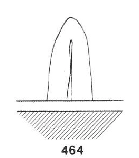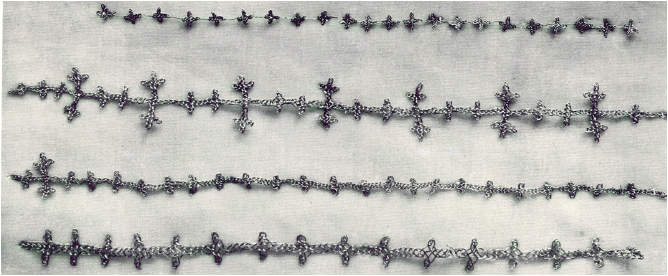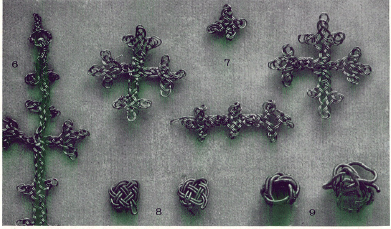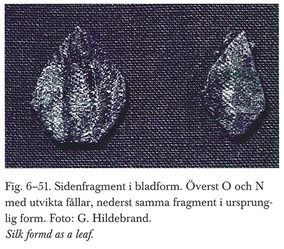We know that they used strips of silk to embellish garments.
Like Tablet Weaving, this is a technique that was evidenced at several sites. The book Silk for the Vikings by Marianne Vedeler covers these bands (as well as other use of silk) in detail. This method of decoration is exceedingly simple, as well as cost effective. Grave finds show that imported silken textiles were cut into very narrow strips (often less than half an inch) and sewn to garments as a method of embellishment.
Like the silk threads used in tablet weaving, silk fabric was a sign of affluence. Even the wealthy, however, chose to cut down these precious textiles to extend their use.
For those who want to use real silk, but who are on a budget, note that often Etsy or Ebay sellers offer "fat quarters" of Indian silks for very reasonable prices.
- Keep the strips very narrow.
- Choose colors available in period with natural dyes (research dyes used in Byzantium or Persia for palette inspiration).
- Only apply silk bands to garments made from high quality textiles.
- Silk twills and silk taffettas were both found in graves in Birka and could be reasonable choices for use.
- Despite that the weft in some period examples could be of a rough quality, I would not suggest that one use modern silk noil (what we often lable raw silk) for those purpose at all. Our raw silk is a very different item than the silks used in period for embellishment.
- If you plan to use a patterned fabric, it might help to research period sources of silk and see what types of patterns were then available.
Metal posaments have been found in graves in Birka. Some of these are simple knot bands in silver while others were far more intricate.
More information on posaments (as well as some beautiful reconstructions) can be found here: http://silberknoten.de/en/index.php?id=2#posamente
More information on posaments (as well as some beautiful reconstructions) can be found here: http://silberknoten.de/en/index.php?id=2#posamente
Ideas for using posaments to create a more accurate impression:
- Use this method of decoration sparingly.
- Best used if your persona is from Birka, as these were not found much outside of that region.
Applique work was very rare and very small.
Oseberg left us a couple of very tiny silk scraps that were once appliqued onto a costume. There were tiny leaf-like shapes, only a centimeter long, and one small stylized shape of an animal's head. Both were cut from silk and applied to a garment. There is no evidence, from any site, of the lovely, large scale applique work you frequently see used by reenactors nor have I seen use of wool applique in period.
- Use applique very sparingly and on a small scale, and would be very stylized.
- Use silk as your applique material.






 RSS Feed
RSS Feed